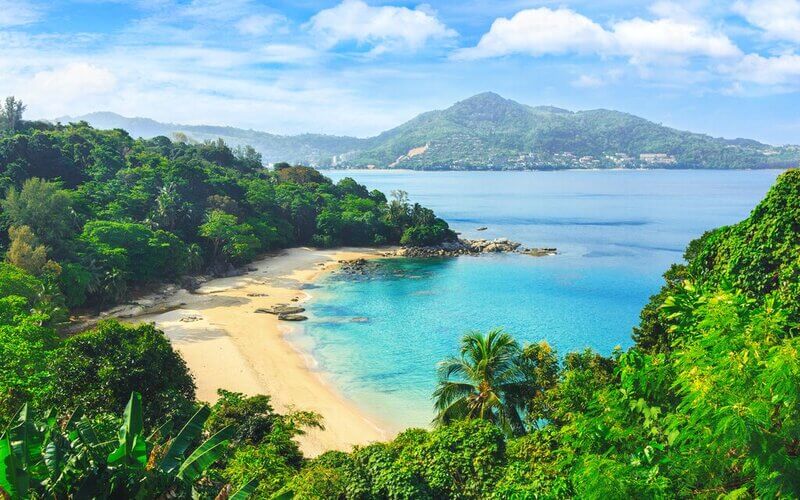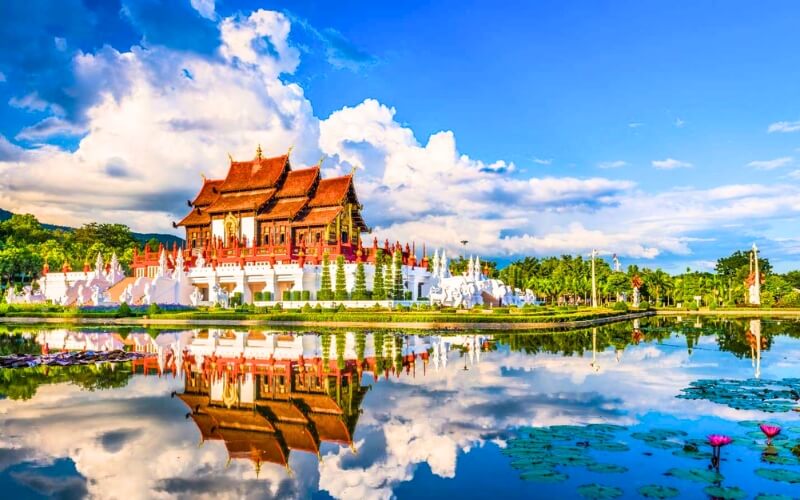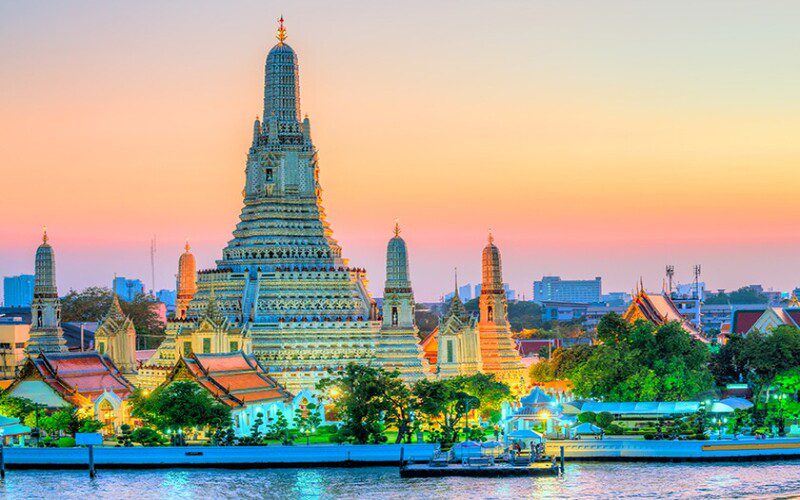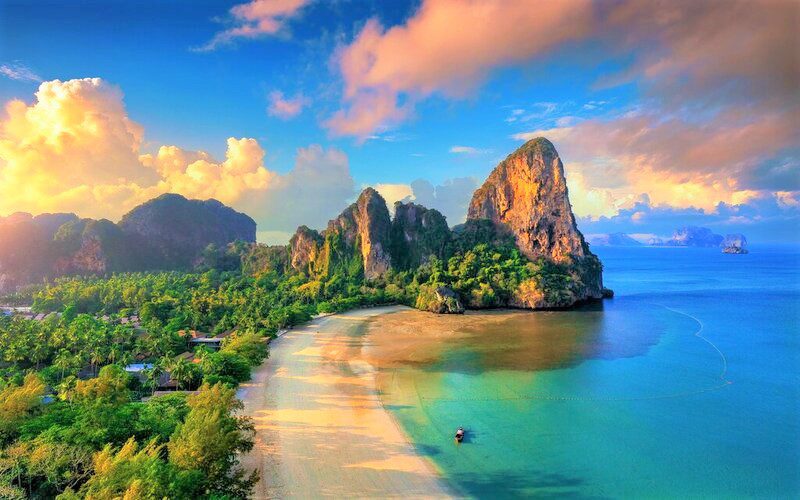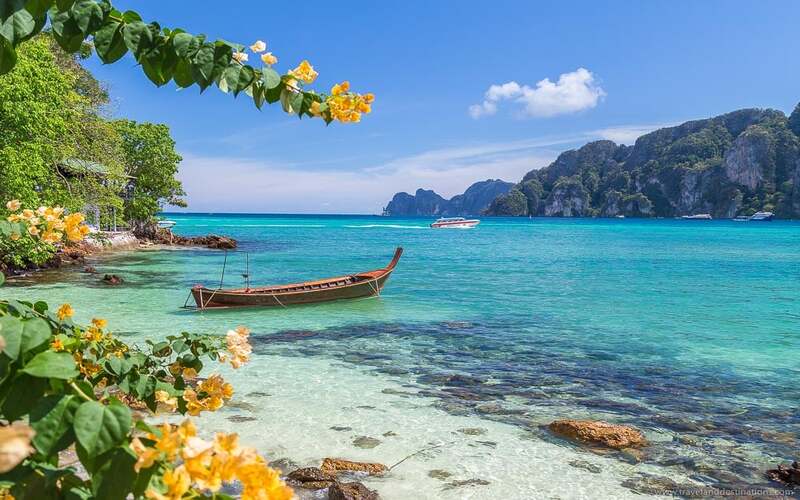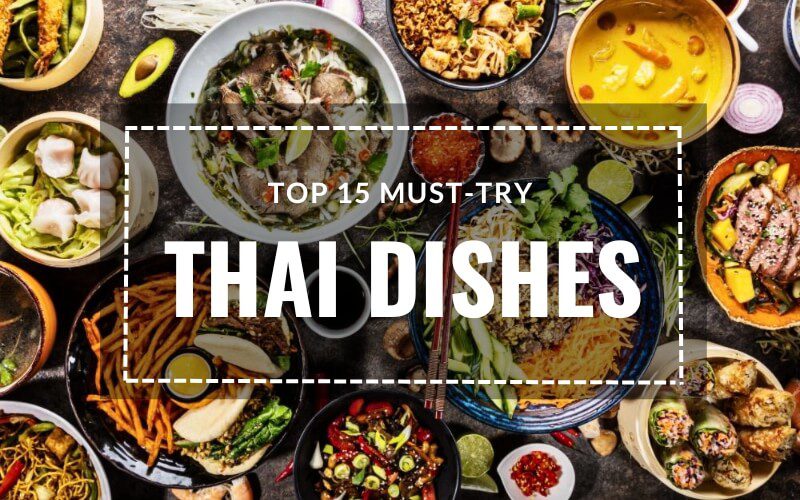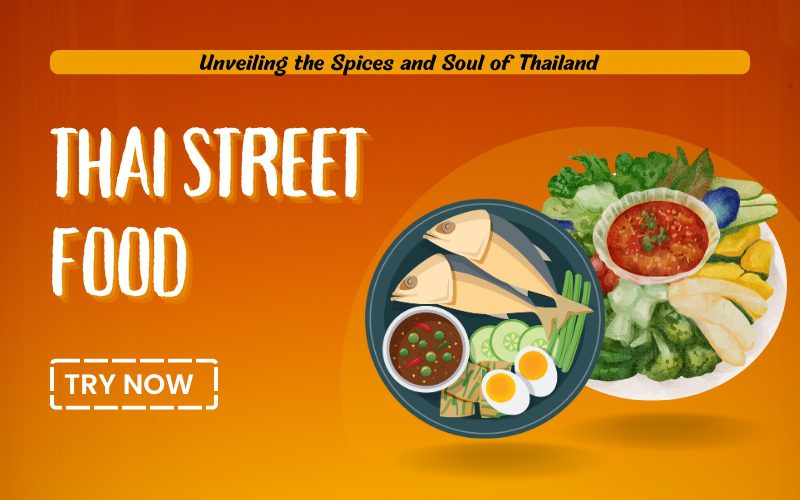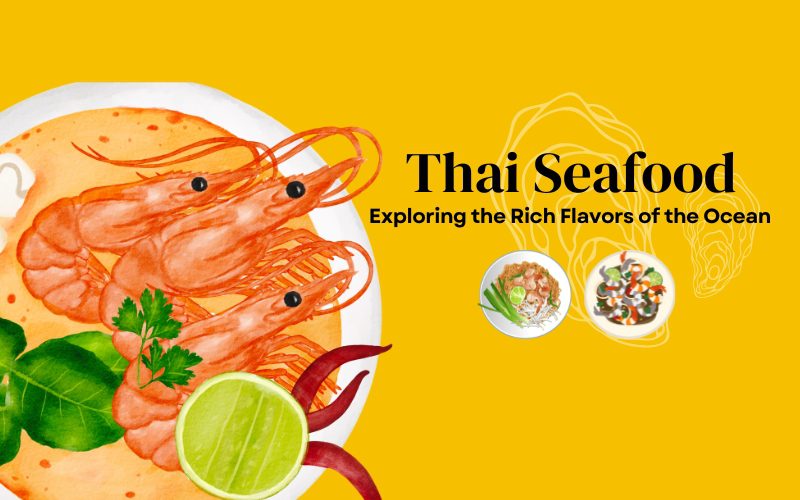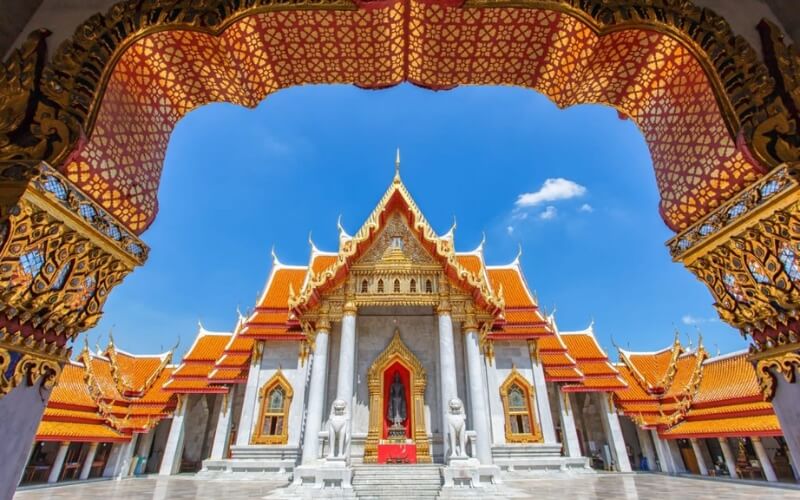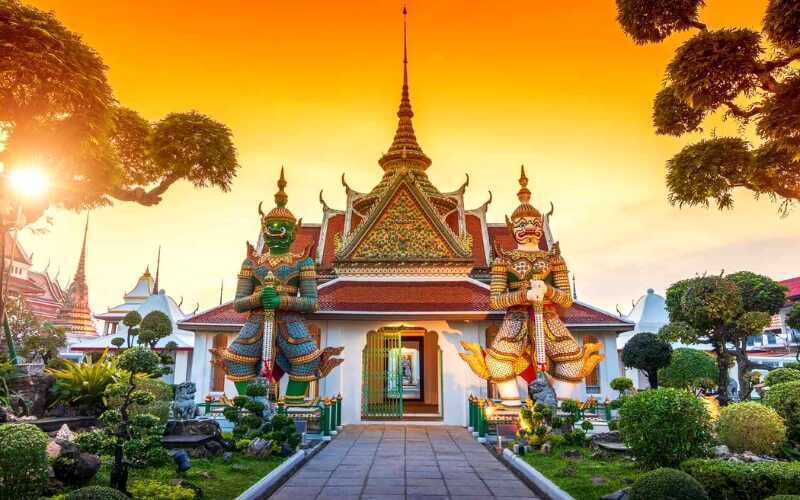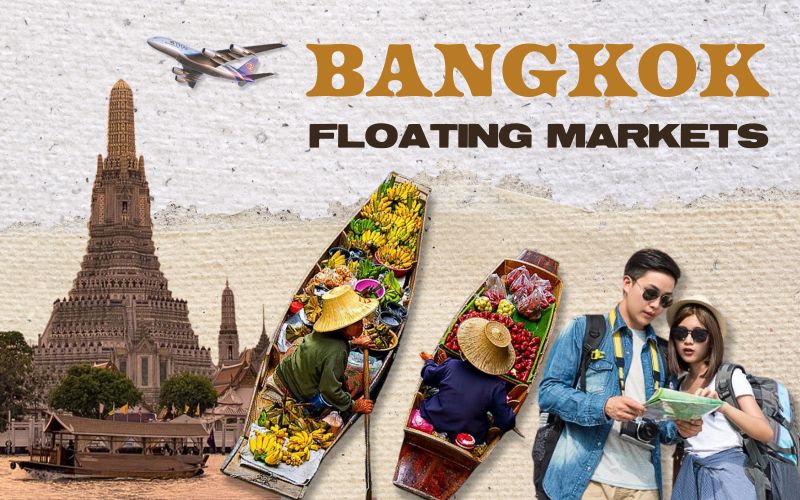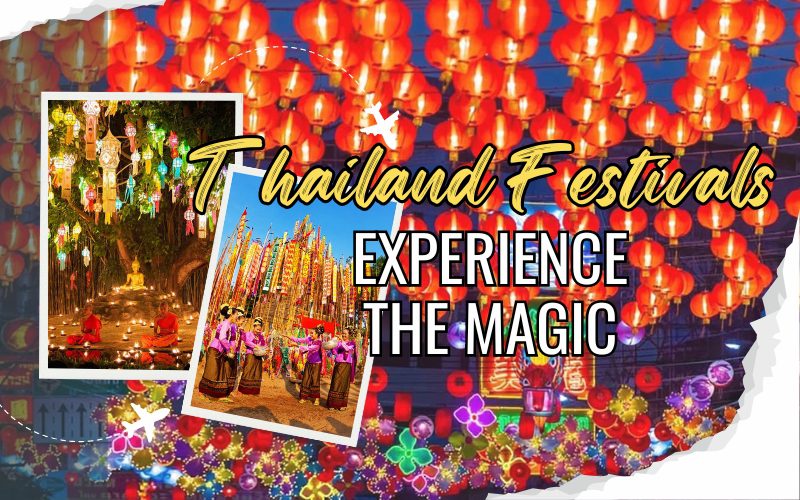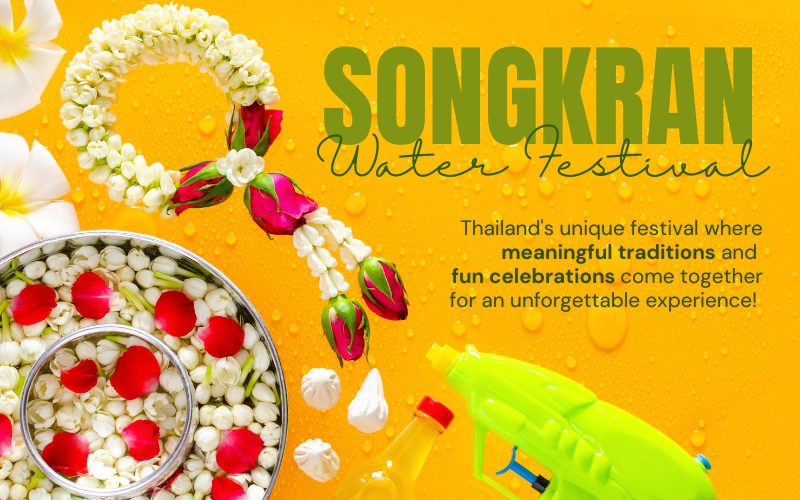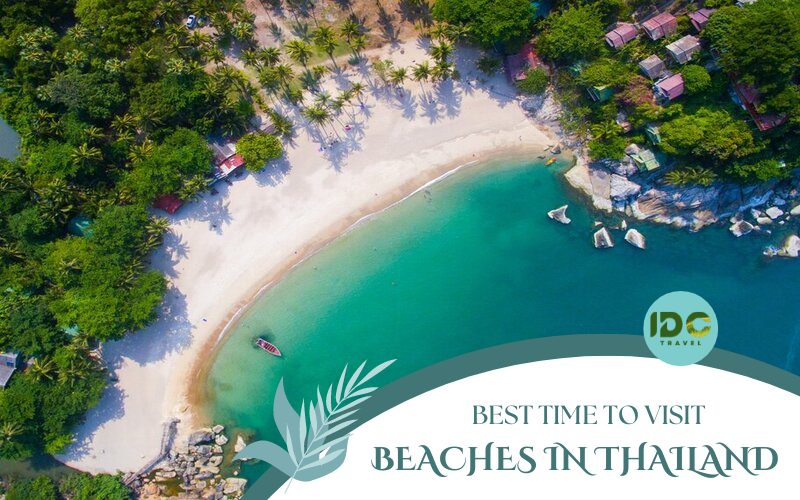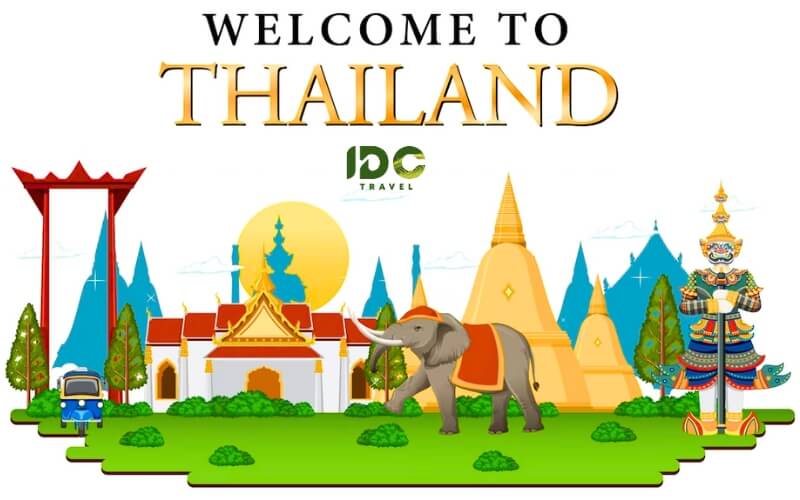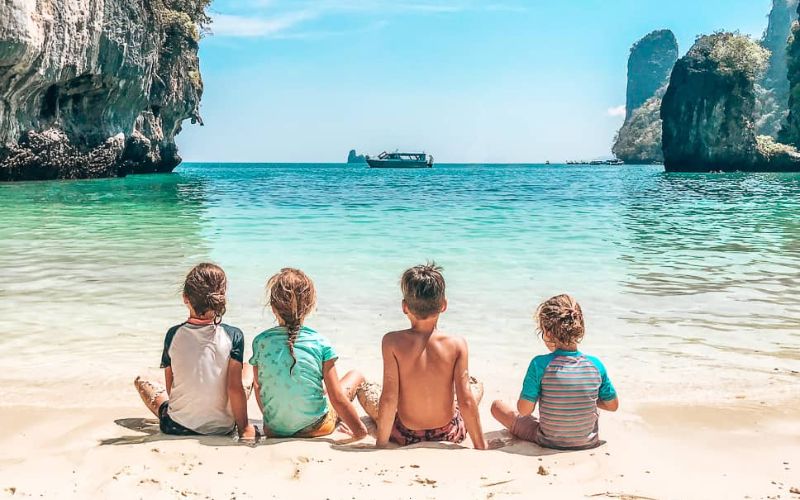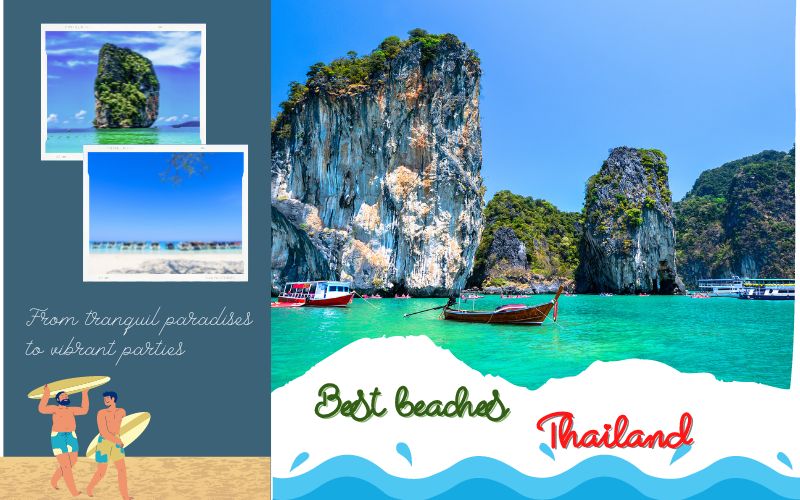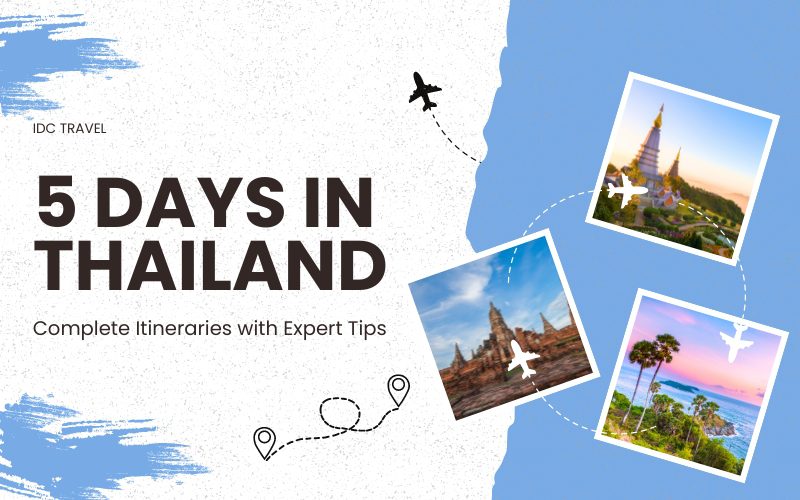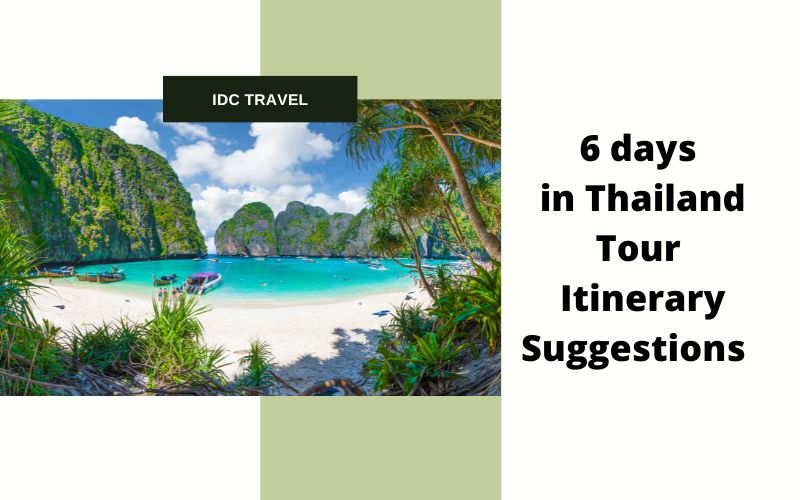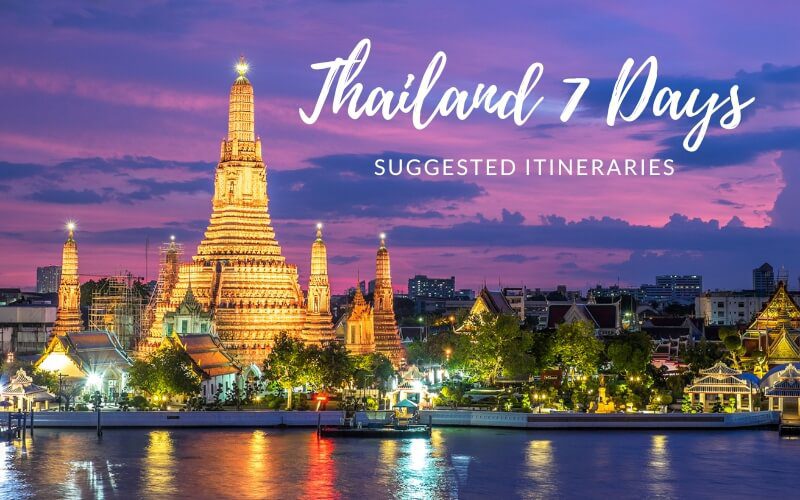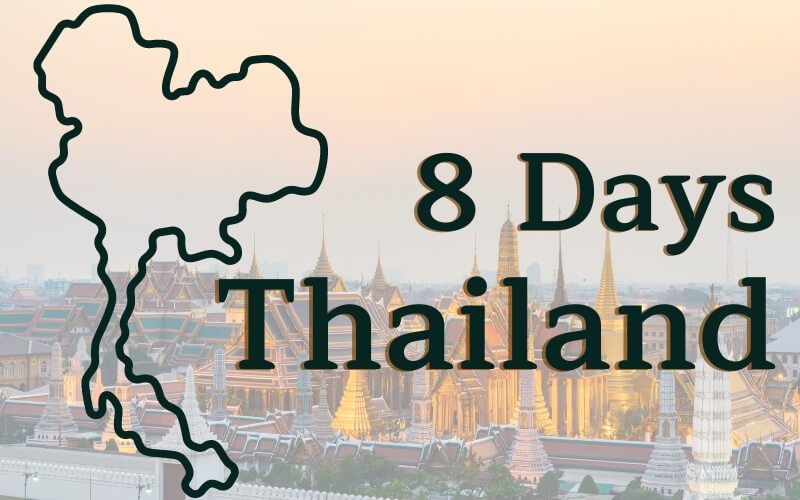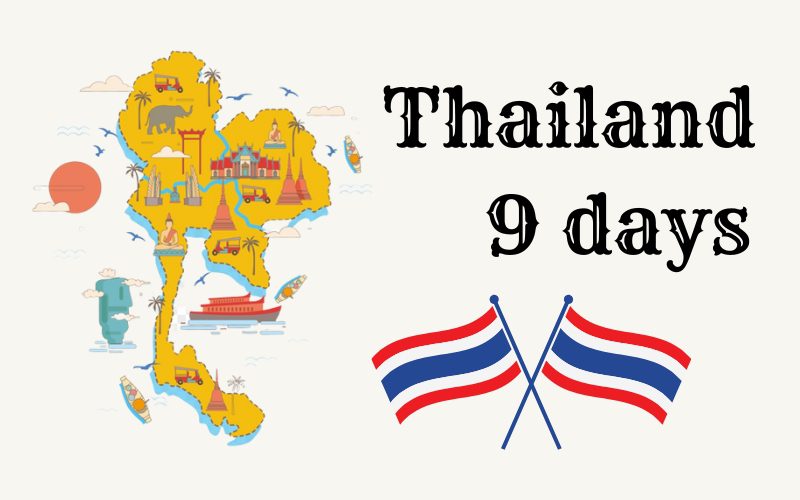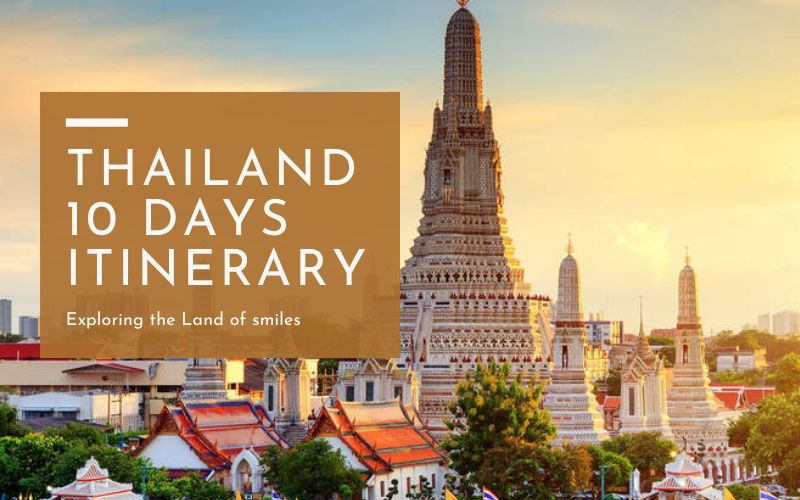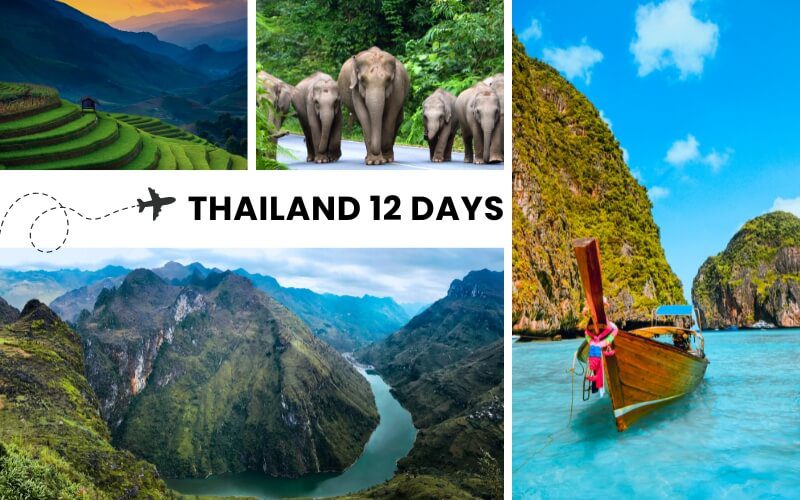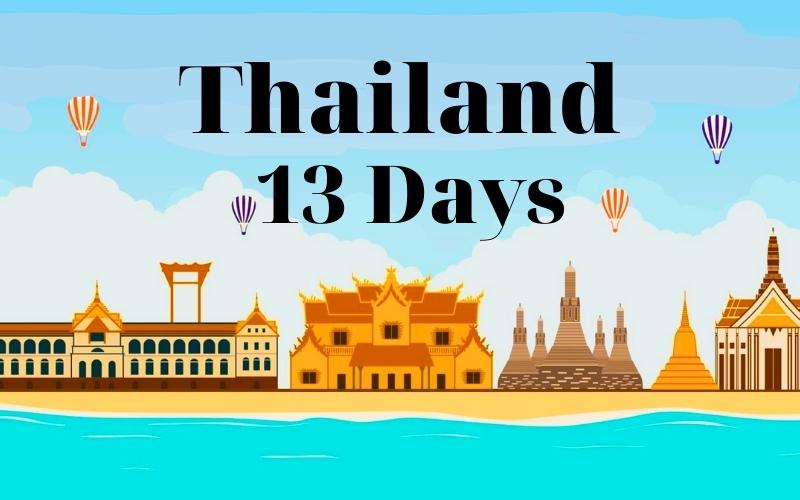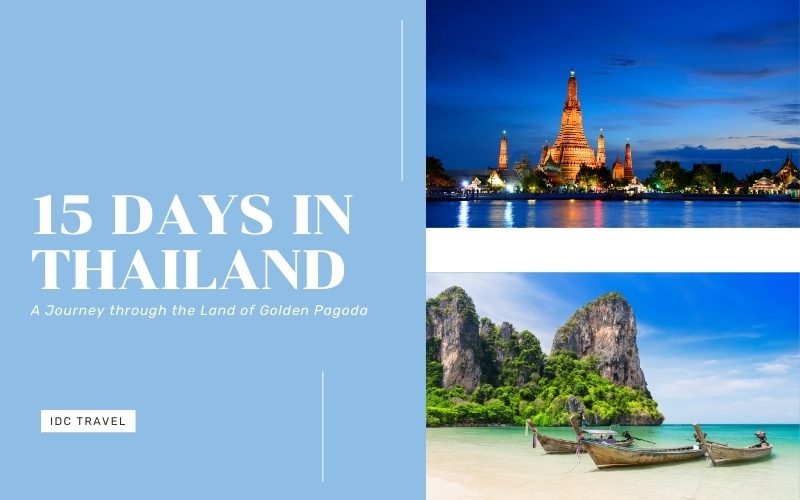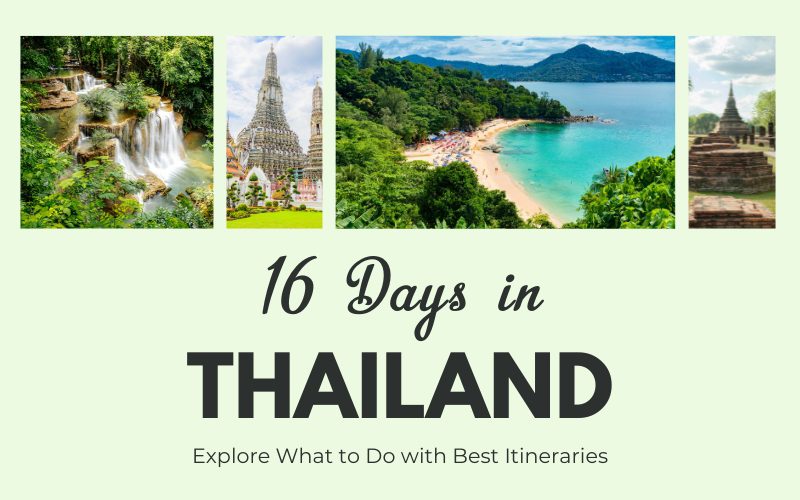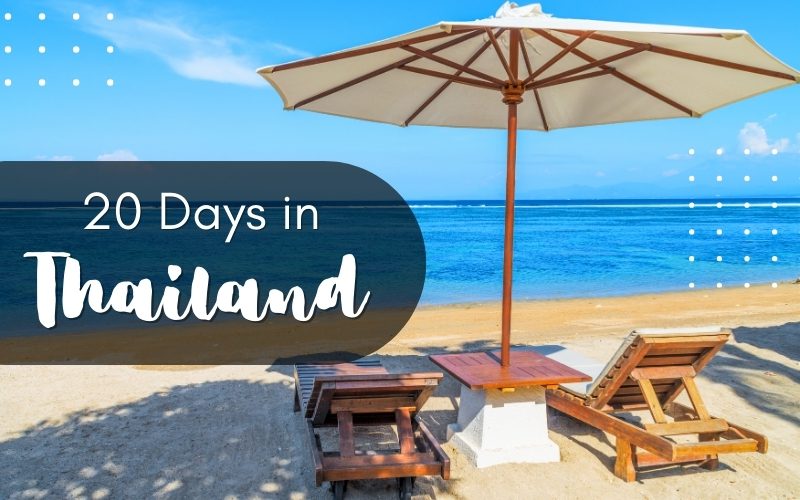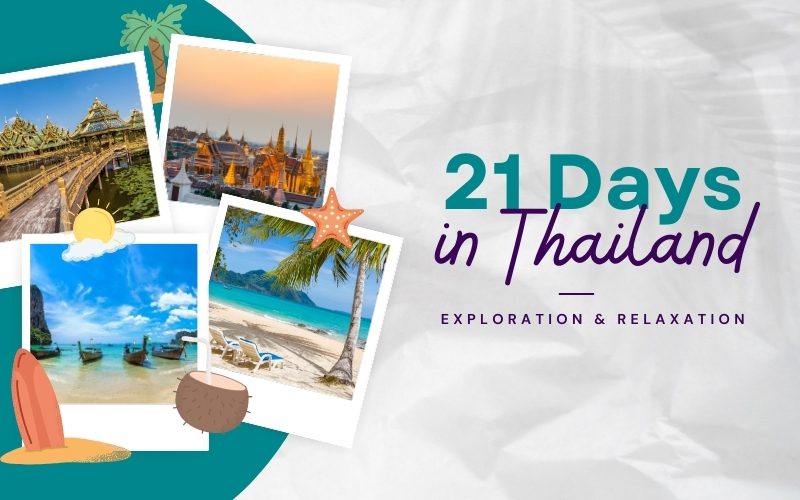In this article, we will provide you with useful Thailand travel guide and tips.
General information
- Capital: Bangkok
- Population: approximately 70 million (2022)
- Ethnic group: 62 ethnic groups
- Language: Thai
- Currency: Baht (THB)
- Time zone: UTC+7
- Telephone code : + 66
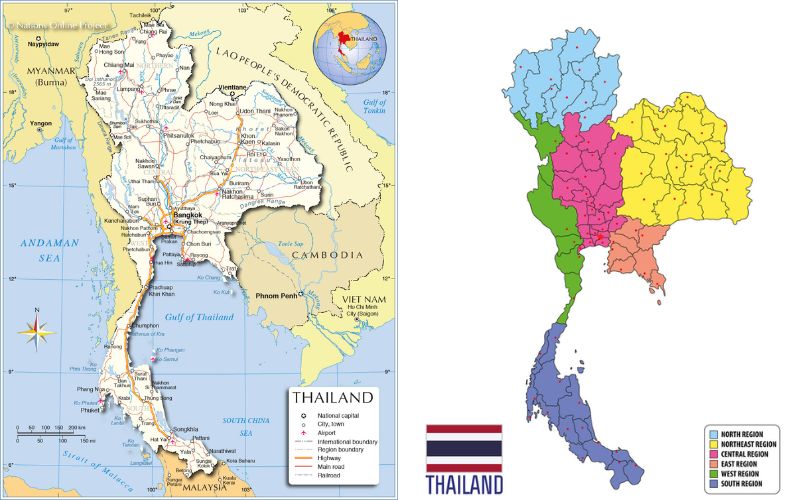
Map of Thailand
Thailand, a multifaceted country, has a rich and dense cultural heritage with diverse influences, unique landscapes, and people who promise unforgettable encounters.
The lush landscapes of the “land of smiles” include rivers, fine sandy beaches, plains, and rocky massifs. This “land of free men” shares borders with Myanmar and Laos to the north, Cambodia to the east, and Malaysia to the south. Thailand is a country long coveted and explored by travelers from all over the world, with a land area of 514,000 km and direct access to the ocean (Indian, Gulf of Thailand, Pacific, etc.).
Approximately 95% of the country’s population is Buddhist (as in many East Asian countries). The Muslim community is quite large and constitutes almost 5% of the population. The representation of Christianity and other local religions is low (less than 2%). If you are planning a trip, the Thailand travel guide on religion in this article will be helpful.
Between authenticity and modernity, Thailand has attracted millions of travelers. This country in all its glory will satisfy all of your expectations, whether you are looking for adventure or a vacation of unparalleled comfort, whether you are a fan of landscapes or cultural experiences, or whether you are a lover of thrills or relaxation and well-being.
Ready for a trip to Thailand? The following details in the article Thailand travel guide will surely help you.
Visa and passport
The most useful and important Thailand travel guide is on how to legally enter the country. It is mandatory to have a passport that is valid for at least 6 months beyond your date of arrival in Thailand, as well as blank pages in your passport for the visa stamp. Thailand’s entry visa exemption policy applies to 55 countries, including France, Belgium, Switzerland, and Canada, as well as several European countries, for stays of less than 30 days if arriving by plane and 15 days if arriving by land via Cambodia, Laos, Malaysia, or Burma. To ensure that you are out of Thailand during this time, you must have a return flight ticket. When entering Thailand, you must present your flight ticket. You must also show proof of funds and housing.
To re-enter the country, holders of tourist visas must have THB 10,000 in cash per person.
Thailand Currency
Thailand’s official currency is the Baht. Other currencies, such as the Euro, US Dollar, British Pound, or Canadian Dollar, are not usually accepted.
When you arrive in Thailand, we recommend that you begin by exchanging your money. You can exchange currency at the airport or at major city banks. Thailand will offer you a better exchange rate than your home country. There is no need to exchange currency in Baht before because local Thai banks provide excellent services and exchange rates.
ATMs can be found all over the country, even in small towns. But if you are traveling off the beaten path, have cash with you. Credit cards are accepted in some restaurants, hotels, and shopping malls.
Thailand remains a country where cash is more commonly available. Prepare Bahts if you go to the market or buy souvenirs.
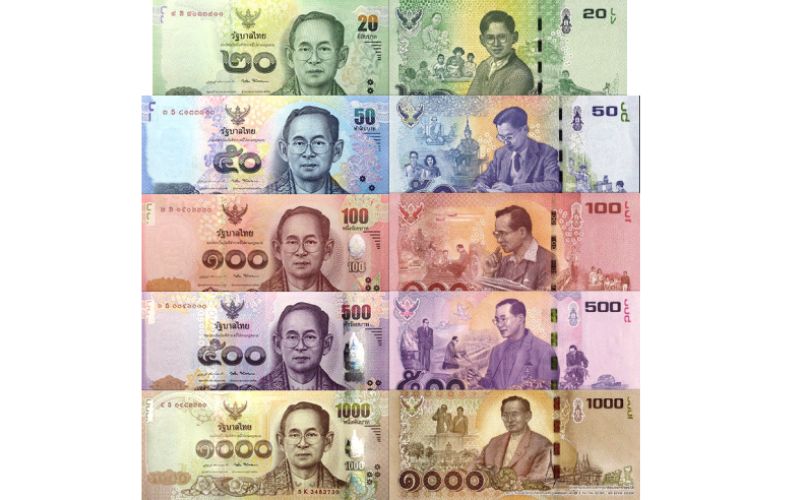
Thailand Currency
Thailand’s weather & Best time to visit
Weather is one of the most important things to keep in mind when traveling to Thailand. In the article Thailand travel guide, we also provide you with the most useful information about the weather and climate.
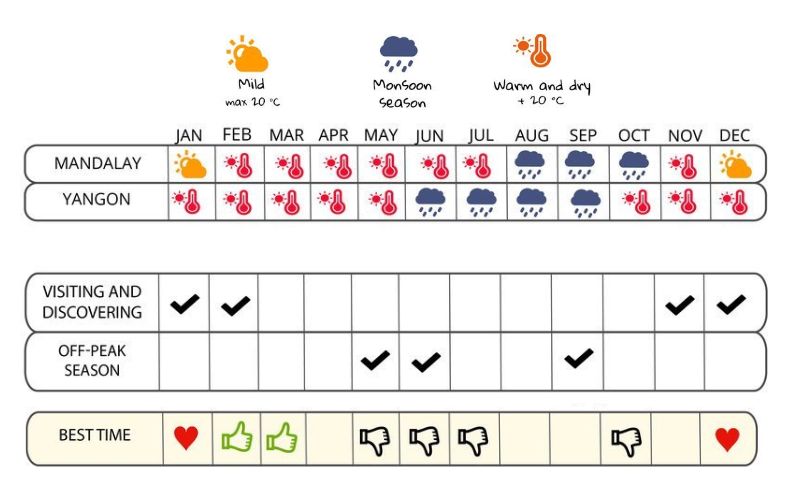
Thailand Weather
Thailand’s climate is subtropical throughout most of the country, resulting in hot and humid weather all year.
Temperatures regularly exceed 40° C (105° F) during the hottest months of the year. Even during the cooler “winter” season, daily highs can reach 30 °C (86° F).
Things do cool off now and then. Temperatures in the north can drop to 10 °C (50° F) at night, so bring a few long-sleeve shirts for these cool days. Only in the high mountains will temperatures drop to freezing or below.
Although the temperature and humidity vary slightly between seasons, the amount of rainfall in Thailand truly defines the seasons.
Thanks to Thailand’s diverse climate, you can visit it at any time of the year. The high tourist season, which runs from November to February, is the best time to visit because the weather is cool and dry.
Rainy season lasts from July to October, but don’t worry if you’ve already booked your tickets to Thailand for this time of year. Many tourists enjoy Thai massages, street food, and nightlife.
The summer season lasts from March to May. April and May are the hottest months.
Getting around in Thailand
As you know, traffic in Thailand is quite complicated. Therefore, it’s necessary for visitors to read our Thailand travel guide on how to move safely and inexpensively. It’s even more chaotic in Bangkok during rush hour, but thanks to public transport like the MRT and the BTS (Bangkok Skytrain), you can get around the city easily and quickly. The tuk-tuk is another authentic mode of transportation for exploring the city. You should try this unique mode of transportation in Thailand at least once during your trip. Motorcycle taxis are unsafe, so we don’t recommend them. You can easily hire a private car with a driver here.
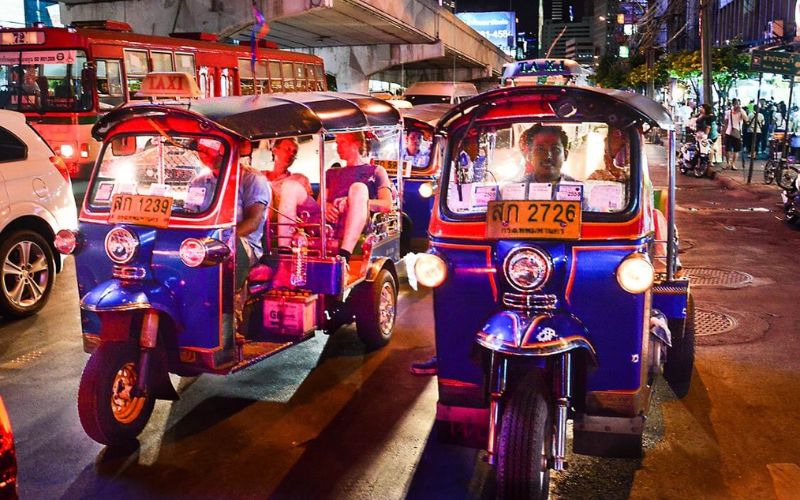
Tuk tuk in Thailand
The main modes of transportation in Thailand are buses and trains. Thailand’s rail system is efficient and safe, and trains can even take you to Malaysia and Laos. Renting a car in Thailand gives you more freedom, especially if you want to travel off the beaten path. To best prepare your tour in Thailand, contact a local travel agency.
Thai cultural etiquette’s dos and don’ts
When visiting a foreign country, it is critical to observe certain customs, particularly in Buddhist countries such as Thailand.
- Cover your shoulders, elbows, and knees When entering a temple
- Wear no see-through or sleeveless clothing. Sarongs are widely available in markets and can be worn to temples.
- Dress appropriately when visiting religious sites.
- Avoid discussing governmental or political issues. Because Thailand’s King is highly respected, there are rules prohibiting anyone (locals or foreigners) from criticizing him.
- Don’t dismiss the Buddha symbol as Thailand is primarily a Buddhist country. Climbing on Buddhas in temples is considered offensive and, in some cases, a punishable offense by law.
- Don’t touch other people’s heads. Touching people’s heads or hair is considered offensive in Thailand because the head is considered sacred and the cleanest part of the body.
Best places to visit in Thailand
Bangkok
Bangkok, the capital of Thailand, must be one of the most popular tourist destinations recommended by any Thailand travel guide. When visiting Thailand, visitors always include this magnificent capital on their travel list. Bangkok is appropriate for all types of visitors, whether they are on a family vacation, traveling in luxury, or looking to save money. The city is well-known for its massive palaces and spectacular temples, such as Wat Phra Kaew, one of Thailand’s three national treasures. The bustling Damnoen Saduak Floating Market, about an hour and a half drive from Bangkok, depicts local scenes and daily Thai life for you to experience. Don’t forget to buy tropical fruits and sample street food such as Som Tam (papaya salad), Khao Pad (fried rice), Pad Thai (prawn noodles), and Khao Neeo Mamuang ( Thai mango sticky rice).
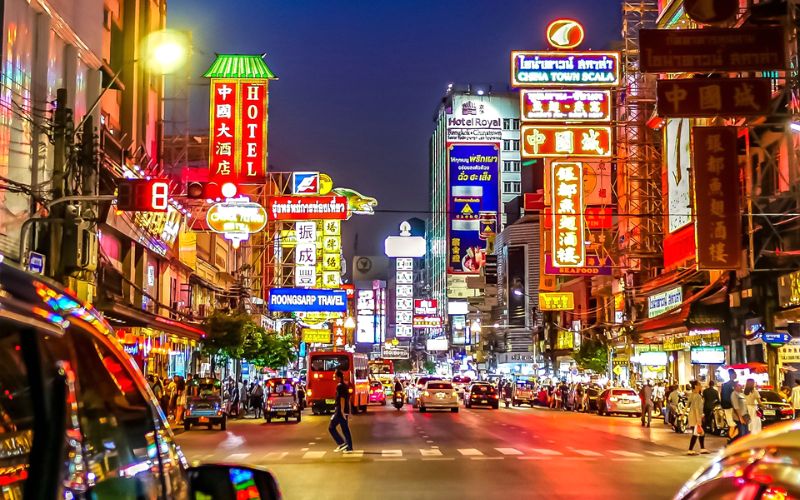
Bangkok
Chiang Mai
Chiang Mai, in northern Thailand, is the country’s second-largest city. If you want to experience Thailand and Thai culture in an authentic way, avoid spending time at the beach and instead visit Chiang Mai after Bangkok. The city is a combination of magnificent landscapes and architecture reminiscent of the ancient capital. Chiang Mai’s main tourist attraction is the Doi Suthep Temple on a hilltop overlooking the city. There are many fun activities for nature lovers, such as cruises along the Mae Ping River, mountain exploration, and elephant rides.
Pattaya
Pattaya, a 2-hour drive from Bangkok, is a haven for foreigners seeking wild nights. Pattaya has become the ideal Thai weekend destination due to its proximity to Bangkok. It is simple to locate luxury hotels, welcoming restaurants, bars, pubs, and nightclubs. Pattaya is also well-known in Thailand for its golf circuit. Surprisingly, this city has the most golf courses in Southeast Asia, with 21 golf courses.
Phuket
Phuket is the largest island in Thailand and one of the most coveted islands in the country. This island’s preserved tropical forest and white sand make it a true paradise. You can engage in three sports activities while on vacation in Phuket: jet skiing, surfing, and paragliding. Furthermore, Patong Town in Phuket is a paradise where you can experience all-night parties. Don’t forget Phuket if you want to go on a dream beach tour.
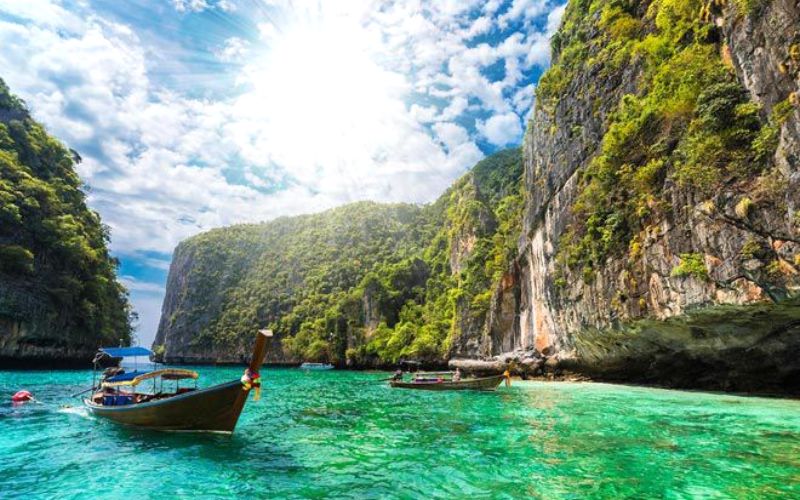
Phuket
Koh Samui
Koh Samui is a paradise with its long sandy beaches and coconut palms. It’s much calmer and quieter than in Phuket. Snorkeling and surfing are popular activities on Koh Samui, particularly at Chaweng Beach. Koh Samui can accommodate all of your accommodation needs; there are budget hotels, famous and coveted seaside resorts for honeymooners, and luxury hotels.
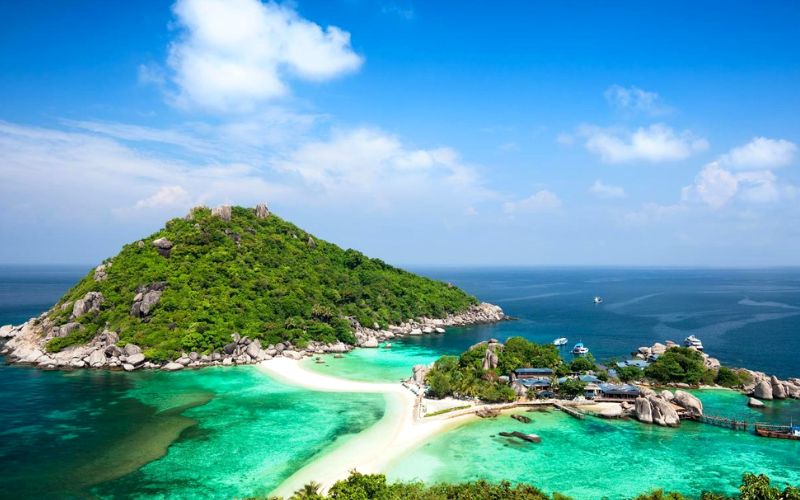
Koh Samui
>>Here are Best Thailand Tours & Travel Package 2023-2024
Best food to eat in Thailand
When searching for a Thailand travel guide, one of the things travelers care most about is food. Thai cuisine has gained international acclaim and has been the subject of numerous documentaries for big production companies such as Netflix. Since the 1980s, when tourism to Thailand increased dramatically, Thai food has established itself as one of the world’s leading culinary schools. It is one of the five most popular food types in the world, along with Indian, Chinese, French, and Italian. European, Chinese, and Japanese cuisines, etc. have influenced Thai cuisine. Today, Thai food is distinct, with a distinct blend of five tastes: sweet, sour, bitter, salty, and spicy. Here are the most chosen cuisines by travelers:
Tom Yum (Spicy Shrimp Soup)
“Tom yum” is a combination of two Thai words: “tom” and “yam.” “Tom” refers to the boiling process, whereas “yam” refers to a spicy and sour salad popular in Laos and Thailand. Tom yum flavor is sour from lime juice, salty from fish sauce, and mildly sweet from Nam Prik Pao paste.
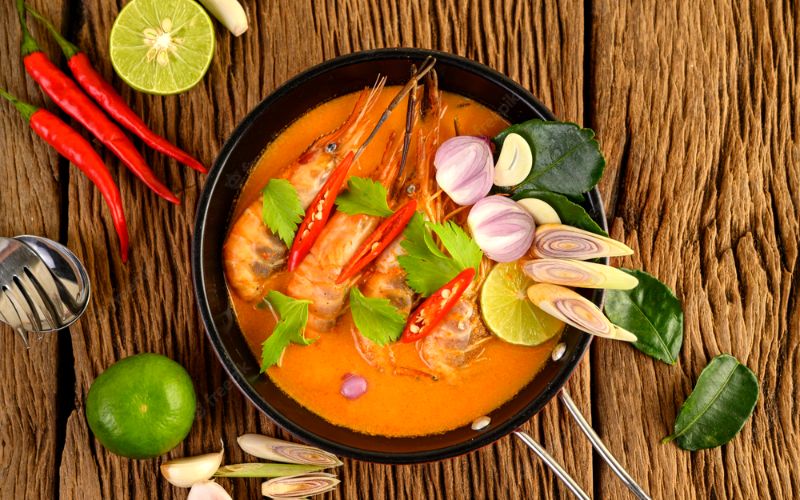
Tom Yum
Pad Thai (Thai-style stir-fried noodles)
Pad Thai is a stir-fried rice noodle dish with eggs, fish sauce, tamarind juice, red chilies, tofu, and cilantro. This dish combines different textures and flavors – perfectly chewy noodles, crispy sprouts, and tender meat, along with a balance of salty, sour, sweet, and spicy flavors.
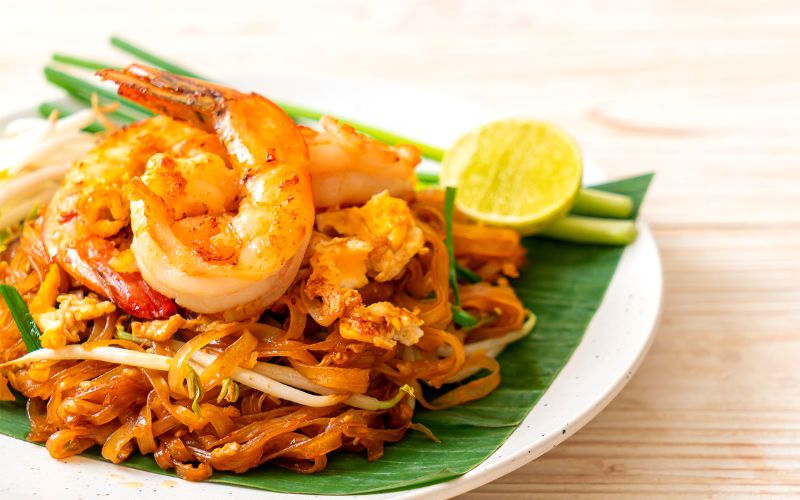
Pad Thai
Panang curry
Panang is a type of red Thai curry paste that is cooked and mixed with beef, pork, or chicken strips. People use herbs and spices like dried chili peppers, lemongrass, galangal, kaffir lime zest to make the curry paste. The flavor of Panang curry is a delicious combination of salty, sweet, creamy coconut milk, and nutty peanut flavor.
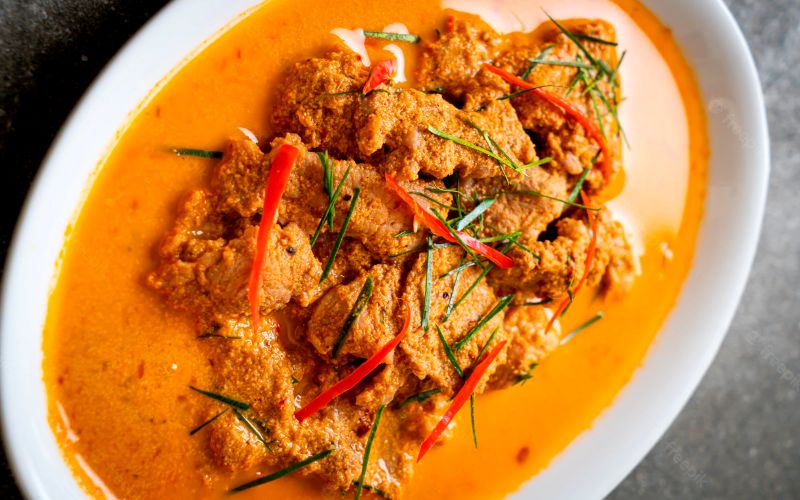
Panang Curry
Tom Kha Gai (Chicken in Coconut Milk Soup)
The broth in Tom Kha Gai is cooked with a flurry of Thai herbs and a special addition of coconut milk. It is thickened with coconut milk and seasoned with chili and fish sauce. This food is best served with chicken or straw mushrooms and is intended for non-spicy eaters.
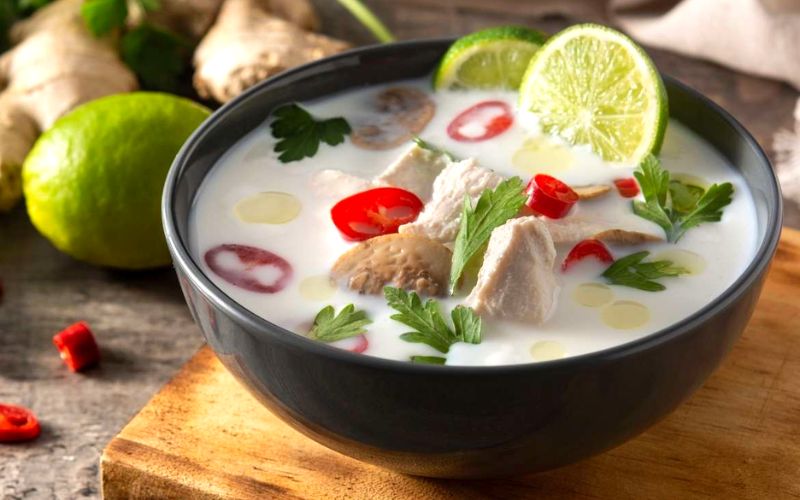
Tom Kha Gai
Public holidays and festivals in Thailand
Here is some important information if you plan to visit Thailand during the holiday season. In Thailand, there are numerous festivals, the most well-known of which are Songkran and Loy Krathong. Songkran is the country’s most anticipated holiday. It is the traditional New Year, and the residents gather in their homes to celebrate with their families. The festival’s main activity is water splashing, which the locals believe brings good luck to others.
List of events in Thailand
- Makha Bucha: the full moon festival of the third lunar month (February to March)
- Songkran: the traditional Thai New Year, takes place in April (13-15 April, but the date may change in some places).
- The day of the coronation of King Rama IX: May 5.
- Loy Krathong, Lantern Festival: the first full moon day of the 2nd lunar month, usually in November.
- King Rama IX’s birthday (Father’s Day): December 5
We hope the information in the article “Thailand travel guide” will be helpful to you. If you want to have more information and ideas to build an unforgettable itinerary in Thailand, do not hesitate to contact us!
Top Thailand Destinations
Start planning your tailor-made tour with 1-1 help from our travel advisors.
- Plan your tailor - made trip with a local expert
- Book securely with money-back guarantee
- Travel stress-free with local 24/7 support

